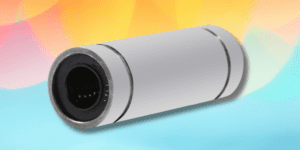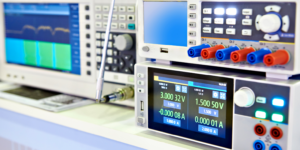Spis treści:
What is the phenomenon of single-board computers?
Minicomputers are very popular among users all over the world. They are used by both hobbyists and professionals in electronics and computer science. In terms of basic design, minicomputers are very similar to their bigger brothers. Circuitry of microcomputers includes components such as a microprocessor or microcontroller, memory chips, and an input/output system that is necessary for interfacing with external devices. Most often, we can use minicomputers in two ways – as physical controllers of hardware applications for embedded systems or as desktop computers for office tasks, watching movies and browsing the Internet. This article describes the origins of minicomputers.
The rise of minicomputers
In the 1970s, shortly after the first microprocessors appeared on the market, first minicomputers were created. Their design consisted of small PCBs, on the surface of which were placed the most functionally necessary electronic circuits known from full-sized computers, such as a processor, memory, keyboard, display and I/O interface. Most of those computers, however, were depleted of network cards and image & sound processors. An example of such minicomputer is the 1977 MMD-1, which was equipped with Intel’s C8080A CPU and C1702A EPROM chips. Minicomputers have been used for a very long time by semiconductor manufacturers as a workbench tool for functional tests of integrated circuits (such as CMOS/TTL logic chips) and discrete components (such as transistors and diodes) during the prototyping stage. Such tools soon became available for purchase at retail.



Minicomputers produced today, known under the acronym SBC (Single Board Computer), have most of the built-in components known from PC motherboards, but in much smaller packages. Sometimes they are also equipped with other key components, which means that the direction of their development goes towards the capabilities of traditional full-sized PCs known to us today.
Open source vs proprietary
Basically, the minicomputers offered today can be divided into two groups in terms of hardware and software licenses:
open source – complete transparency of the product datasheet with permission for modification by third parties,
proprietary hardware – full or partial reservation of all copyrights and datasheet of the product by the designer.
Of these two licenses, open-sourced SBCs are much more popular especially in the groups of programming and electronics beginners. In contrast, the proprietary licensed SBCs, in which the hardware and software are legally protected, are designed to be installed in a specific target application with some hardware parameters adjustable by the end user.
What can you do using modern mini-computers?
Modern single-board computers are used as embedded systems in technological processes based on hardware and software with lots of evaluation possibilities. The bestsellers on the minicomputer market are primarily for the Arduino, Raspberry Pi and BeagleBone platforms – main reasons for purchasing them are considerable possibilities of use at an affordable price, exceptionally good technical support from manufacturer in comparison to some not-so-great clones and large user community in the network, as well as wide range of hardware add-ons and software libraries available.
The original purpose of such boards was (and still is) to create a tool for learning electronics and computer science. Single board computers can be used in many applications, such as test and measurement instruments, lighting and motor drivers, control panels with buttons and displays, audio/video processing systems, game consoles and much more. Minicomputers are also a very helpful tool during the stage of prototyping new electronic devices which is why they are so widely used by professionals. The popularity of minicomputers has also contributed to the development of many subcategories of science and technology such as health care, automotive, security or civil engineering, as well as broadly understood art, including cinematography and music.
You can find more info about minicomputers on Botland store.
How useful was this post?
Click on a star to rate it!
Average rating 0 / 5. Vote count: 0
No votes so far! Be the first to rate this post.






